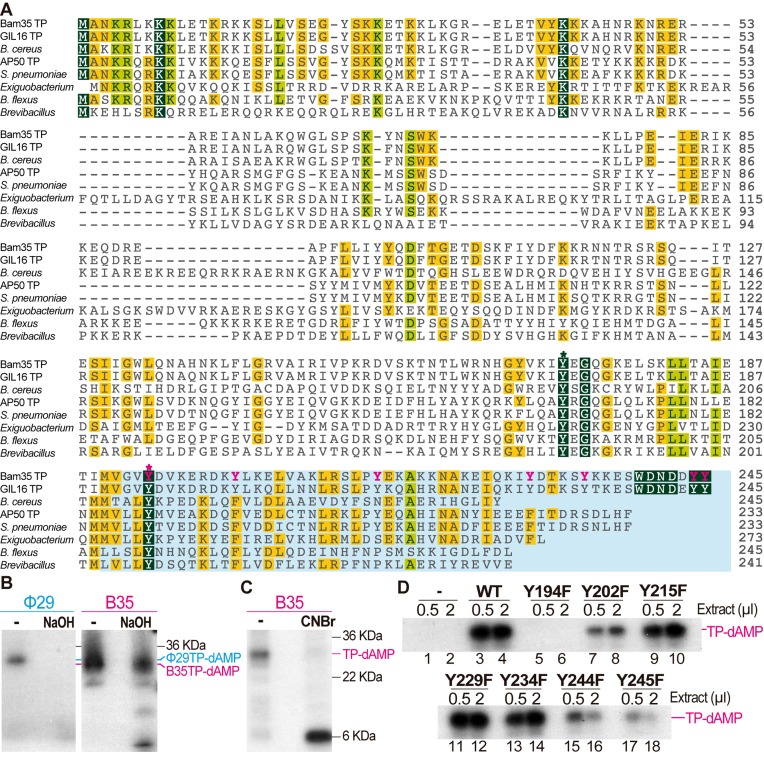Figure 3.
Mapping Bam35 TP priming residue. (A) Multiple sequence alignment of Bam35 TP and related TPs. Sequences used were from putative TPs (proteins encoded by ORF4) of representative related Gram-positive tectiviruses Bam35 (NCBI ID NP_943750.1, 10), GIL16 (YP_224102.1, 47), AP50 (YP_002302516.1, 30), as well as other BLAST-retrieved orthologous sequences from NR protein database and tentatively annotated as bacterial proteins from Bacillus cereus (WP_001085581.1), Streptococcus pneumoniae (WP_050224775.1), Exiguobacerium antarticum (WP_026829749.1), Bacillus flexus (WP_025907183.1) and Brevibacillus sp. CF112 (WP_007784052.1). These bacterial proteins may correspond to TPs from uncharacterized tectivirus-like prophages or linear plasmids from Gram-positive hosts. Sequences were aligned with MUSCLE algorithm implemented in Geneious R8 software (48). The C-terminal fragment of all proteins that corresponds with the bromide cyanogen cleavage product is shadowed in blue and the tyrosine residues present in the Bam35 portion are highlighted in pink. Conserved Y172 and Y194 residues are marked with an asterisk above the sequences. (B) Determination of the nature of the Bam35 TP priming residue by alkali treatment. Control initiation reactions with Φ29 DNA polymerase and TP were performed in parallel. After the initiation reaction, samples were incubated for 6 min at 95°C in the absence or presence of 100 mM NaOH, and subsequently neutralized and analyzed by SDS-PAGE and autoradiography. (C) Mapping the Bam35 TP priming residue. The TP-AMP complexes were performed as described and afterward treated with 1.2 mM of cyanogen bromide (CNBr) and 200 mM HCl for 20 h at room temperature. Finally, the samples were neutralized and analyzed by SDS-18% polyacrylamide electrophoresis. (D) Identification of Y194 as the priming residue by TP-deoxyadenylation assays with 0.5 or 2 μl of cell-free extracts of bacterial cultures expressing the TP variants. Extracts prepared from bacteria harboring the empty plasmid (lanes 1, 2) and the wild type TP expression vector (lanes 3, 4) were also used as negative or positive controls, respectively. See Materials and Methods for details.

